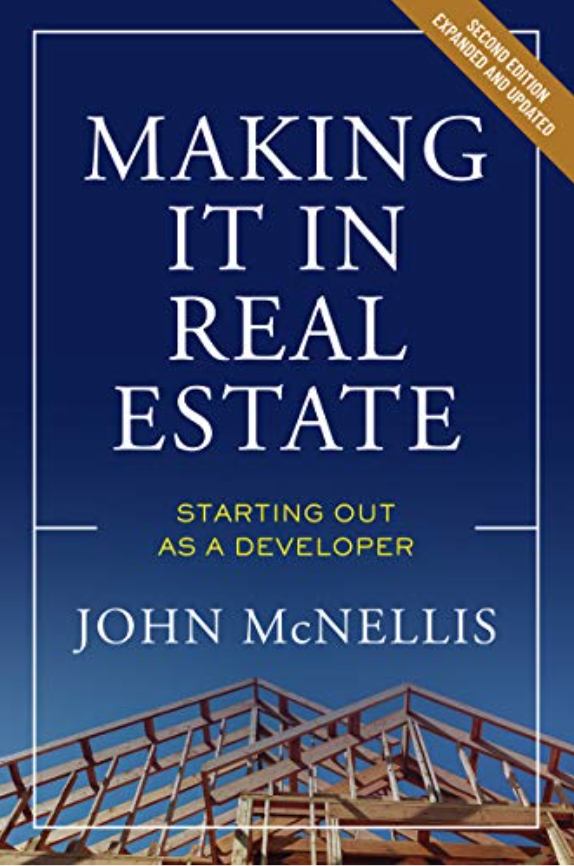Cash flow is real estate’s real value.
Franklin D. Roosevelt’s first vice president, John Nance “Cactus Jack” Garner, is remembered for having observed that the vice presidency isn’t worth a bucket of warm spit. Except he didn’t say spit. The difference between the vice presidency and a financial statement is that the latter is occasionally worth a bucket full.
As a young developer, I could never convince my bankers of the grandeur of my financial statements. A standard financial statement was then—as it is today—little more than a compilation of one’s net worth. As 99.4 percent of my net worth consisted of the “equity” I held in our various limited partnerships, my bankers were not nearly as impressed as they might have been. Holding my statement at arm’s length (as one might a diamondback), my banker would patiently explain that while my 5 percent subordinate-to-everyone general-partnership interest may indeed be worth millions, her principal concern was debt repayment: Where would my loan payments come from and what was my cash flow? Because my cash flow at the time was permanently dammed somewhere far upstream, I thought this line of questioning rather impertinent.
But maybe she had a point.
Properly viewed, a financial statement is more daydream than fact. If someone claims he’s worth a wildly crazy amount—say a Silicon Valley fortune of $300 million—that’s a lovely reverie, but the chances of that guy actually coming up with $300 million in cash are slimmer than a bulimic ballerina. First, instead of the pipe-dream number he claims on his statement for the illiquid asset that constitutes the vast bulk of his empire, he has to mark that asset down to market, be it stock in a privately held company, timber, a coal mine, whatever. Then, he has to sell it, pay federal and state taxes, and—if he’s married—divide that sum by two.
If he owns that $300 million in stock in a publicly traded company, that means he’s the chief executive and can’t sell because his holdings are in stock options or are contractually or de facto restricted. (The CEO can’t be seen dumping his company’s stock.)
While financial statements are generally more exaggerated than circus-tent revivals, they are particularly worthless in real estate. Thanks to the miracle of the 1031 tax-deferred exchange, if a real estate entrepreneur has been around long enough to be truly successful, his current properties—say they show $10 million in equity—will likely trace their tax-basis origins back over 30 years and involve a dozen 1031 exchanges. This invariably means his assets will have tremendous negative bases for tax purposes and likely carry a latent tax liability often surpassing the claimed equity. The only way for a real estate mogul to sell without triggering this tax—dying—has yet to be widely embraced.
Putting real estate’s idiosyncrasies aside, financial statements are still problematic. Even if a financial statement were to accurately reflect the market value of assets and accurately deduct the inchoate taxes, issues likely linger. How would you prefer your own personal $10 million net worth—assets of $10 million and liabilities of $0, or assets of $3.01 billion and liabilities of $3 billion? An over-leveraged net worth can, back to Cactus Jack, evaporate like spit on a griddle.
And even assuming you chose curtain No. 1—the $10 million free and clear—that doesn’t say jack about your cash flow, my nagging banker’s original concern. Ten million dollars parked with Wells Fargo & Co. or JP Morgan Chase & Co. may be safe, but nets you nearly nothing at today’s interest rates. Ten million dollars in gold or any growth stock is good for a nice round zero in annual income, while $10 million in Treasuries has a pulse somewhere between zero and 3 percent, depending on term. And quality corporate bonds? A tad higher than Treasuries.
So this is where real estate finally pays off, where maybe we’re not so dumb after all for having chosen this profession. (When I was quizzing my editor about numbers to illustrate this column, I asked her how much money one needed to be really rich; she countered by asking whether we were talking Silicon Valley rich or just real estate rich; sighing, I dropped the question.) Anyway, an enviably solid real estate portfolio worth $10 million could easily net $500,000 to $700,000 a year in stable, recurring cash flow, far better than its obvious alternatives. My banker was right—it is all about cash flow.
To paraphrase Mark Twain: When I was a young man of 30, my bankers were so ignorant I could hardly stand to have them around. But when I got to be 40, I was astonished by how much they had learned in ten years.


